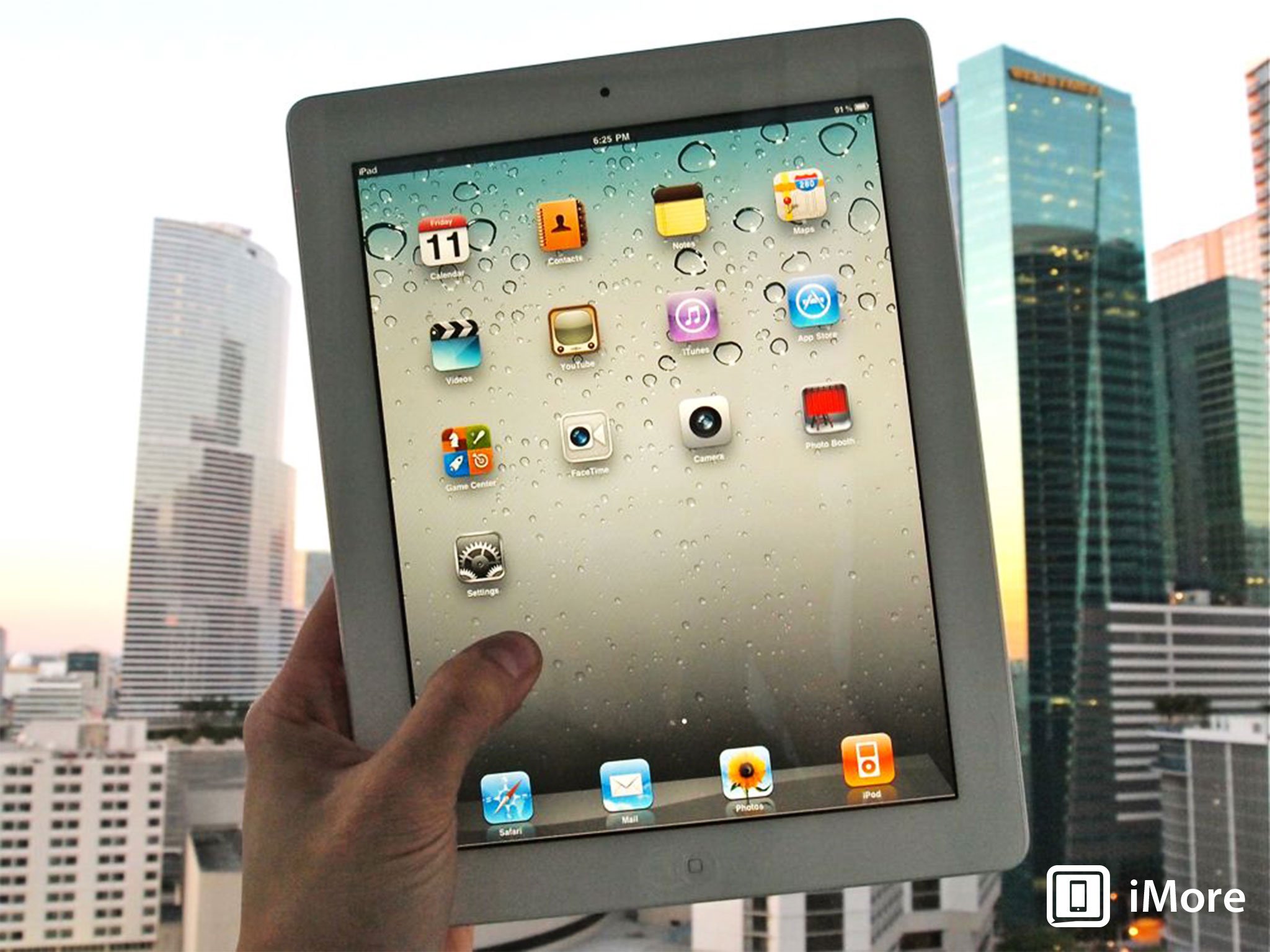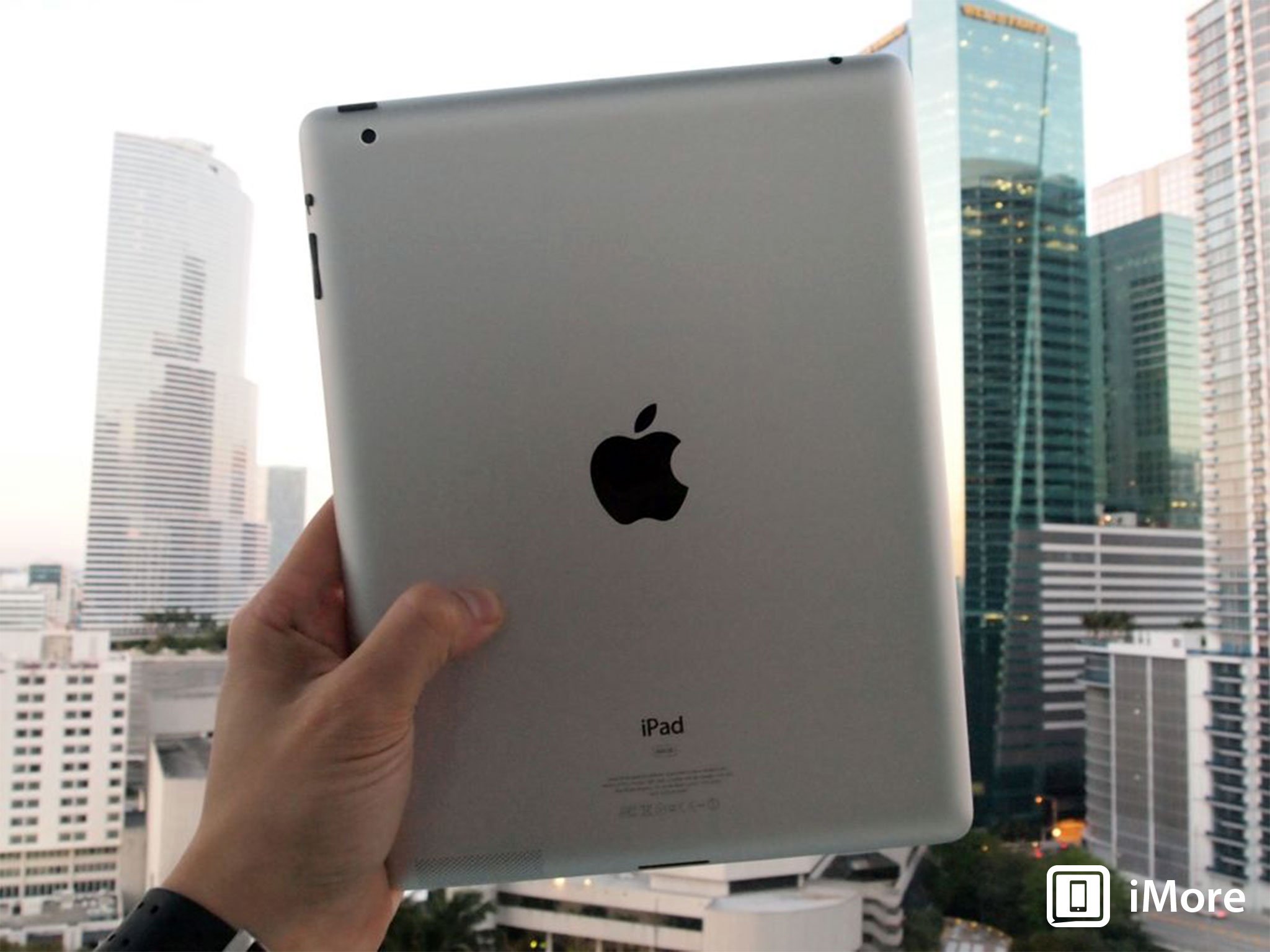History of iPad 2: Thinner, lighter, faster, and more smartly covered

Counting down to the 2014 iPads, we look back at the iPad 2, which introduced not only a sleeker design, but a more focused purpose
On March 2, 2011, Steve Jobs returned to the keynote stage after a long period of medical leave. It was the second-to-last keynote he'd ever present, and he received a long, loud standing ovation. He and Apple had been working on something for a long time, and he didn't want to miss it. The original iPad was supposed to have been magical, but no one, not even Apple, had known exactly how it would weave its spell. A year later and they had a much, much better idea. Where previously they'd known they'd had something, now they were beginning to understand just exactly what they had. It was thinner. It was lighter. It was faster. It was more smartly covered. But it wasn't just about the technology anymore. That alone was no longer enough. It was about the iPad 2.
"With more than 15 million iPads sold, iPad has defined an entirely new category of mobile devices," said Steve Jobs, Apple's CEO. "While others have been scrambling to copy the first generation iPad, we're launching iPad 2, which moves the bar far ahead of the competition and will likely cause them to go back to the drawing boards yet again."
During the iPad 2 event, Steve Jobs said people had made fun of Apple for using the word "magical" to describe their tablet, but that it had turned out to be just that. He proclaimed 2010 as the year of the iPad. He teased 2011 as the year of the copycats before announcing what he thought it really was — the year of the iPad 2.
Faster, thinner, Lighter
The iPad 2, codenamed K94 and model number iPad 2,1, had the same 9.7-inch, 1024x768, 132ppi screen as the original, and came in the same Wi-Fi and Wi-Fi + 3G HSPA/EVDO Rev. A — hello Verizon! — models. It was considerably faster, however, sporting a new Apple A5 chipset with dual-core 1GHz ARM Cortex A9 processors, dual-core PowerVR SGX543MP2 graphics processors, and double the RAM at 512MB. It was up to twice as fast for CPU, and up to 9 times as fast for GPU tasks. 16, 32, and 64GB of NAND Flash storage remained the same, as did the 25 watt-hour battery. So did Bluetooth at 2.1 + EDR, but a gyroscope joined the sensor array.
Thinner and lighter was taken care of by an all-new design that reduced it from 0.53- to 0.34-inches — making it 33% thinner— and from 1.5 to 1.33lbs. Jobs made sure to mention several times on stage that the numbers were deceptive and at those tiny sizes and weights, small reductions made for big differences in how it felt. It wasn't a breakthrough, certainly nothing that changed it from a 2-handed to a 1-handed device, or made it easier to use for long periods of time without resting it on a lap or surface, but it was a significant improvement.
The iPad 2 also added cameras. Two of them. A rear-facing 1.3 megapixel/720p camera (what Apple now markets as iSight), and a front-facing 0.3 megapixel/VGA camera (FaceTime). They were... terrible. But they were cameras. It also added a second color. In addition to black and aluminum, you could get the iPad 2 with an iPhone 4-style white front plate instead.
Prices stayed exactly the same, starting at $499.
There were also some new accessories. First was a $29 HDMI to 30-pin Dock connector dongle allowed for mirroring the display to an HDTV. Second, was the Smart Cover. It could fold into a typing or viewing stand, and thanks to magnets embedded into the cover and the iPad 2, it stuck on and aligned automatically, and it could wake the iPad when it opened and sleep it again when it closed. They came in polyurethane for $39 and leather for $69, and in a variety of colors.
iMore offers spot-on advice and guidance from our team of experts, with decades of Apple device experience to lean on. Learn more with iMore!
It shipped with iOS 4.3, which added a few new features in addition to what iOS 4 had brought to the iPhone. They included the Nitro JavaScript engine for Safari, Home Sharing for iTunes streaming from OS X to iOS, improvements to AirPlay, and a return of the hardware orientation lock as a hardware switch option. It also added FaceTime for video calls, and an iOS version of Photo Booth to the built-in apps.
Impressively, adding to the 65,000 tablet-optimized apps that were already in the App Store, Apple added two more of their own —iMovie and GarageBand.
They were, to put it mildly, a revelation.
Randy Ubillos showed off iMovie, with an old time movie theater main screen, and what would become Apple's new, signature, editing interface. It was precise, it was multitrack. It was amazing. GarageBand was perhaps even more impressive. You could plug in and use real instruments, but it also supported touch instruments right on the iPad. Xander Soren handled that demo, and immediately set a new standard for mobile apps. They showed, arguably for the first time, what the iPad really meant for the future of personal computing. It mean very personal computing. or as Apple had come to call it, post-PC.
Jobs ended the event by focusing on that, and repeating his belief that "technology alone was not enough", while standing at the crossroads of technology and liberal arts.
Better magic

The iPad 2 launched on March 11 in the U.S., and 25 additional countries on March 25. Apple:
While competitors are still struggling to catch up with our first iPad, we've changed the game again with iPad 2," said Steve Jobs, Apple's CEO. "We're experiencing amazing demand for iPad 2 in the US, and customers around the world have told us they can't wait to get their hands on it. We appreciate everyone's patience and we are working hard to build enough iPads for everyone.
Reviewers liked not only what they saw, but what they felt . Ed Baig, USA Today:
The headline additions to iPad 2 are front- and rear-facing cameras, the absence of which was my biggest disappointment with version one. Now you can plunge into FaceTime, Apple's nifty video chat program previously available only on the iPhone 4, iPod Touch and some Macintosh computers. With a brand new Apple A5 dual-core processor, the iPad 2 is snappier, too, though it's not as if the first-generation model was a laggard. Apple claims the graphics in the new machine have nine times the horsepower of the original. That's difficult to measure, but Epic Citadel, a stunning, graphics-rich game, played smoothly in my tests.
Jason Snell of Macworld:
For Apple's competitors in the tablet-device market, the iPad 2 is a bucket of water to the face. After more than a year of struggling to catch up to the original iPad, here's a new model that addresses many of the iPad's deficiencies, dramatically improves its speed, and doesn't cede any ground on price, features, or battery life. The iPad 2 raises the bar Apple set a year ago—and it's time for the rest of the industry to scramble again to catch up.For everyone else, the iPad 2 is a triumph, an iPad that's even more iPad than the original. And the original one was really good. The first iPad was a bolt from the blue, a device that defined an entire category, and a tough act to follow. The iPad 2 follows it with aplomb.
Yours truly, for iMore:
I used my original iPad a lot... until iPhone 4 was released. I still kept most of my apps and games on iPad but because iPhone 4 was so much faster I just picked it up far more often. iPad 2 has changed that paradigm again. The combination of the big screen and Apple A5 processor has made it my go-to device once more (when I'm not in feet-down mobile, of course.) It's by no means perfect, and we've listed many of the most glaring and frustrating imperfections above, but iPad 2 looks better, it feels better, and it just works better.
Cliched as it sounds, the iPad 2 was the first complete iPad, and the template from which all others have followed.
The experience fight
The iPad's competitors remained confused. They saw the tablet post-iPad the way they'd seen it pre-iPad — as simply another form factor for the traditional PC. Like a laptop or netbook was simply a smaller PC, so too they felt the tablet was simply a smaller laptop or netbook. It was evident in their marketing. "Amateur hour is over." "Tell your wife... it has a dual-core processor!"
Competitors told people they could have a more traditional PC experience than the iPad. They could have multiple windows and desktops. They could have Flash. They could have everything the vast majority of them never, not ever wanted.
Despite Apple having spent over a year teaching the world just exactly how to sell hundreds of thousands of tablets, no one else seemed able to leave the PC behind.
Yet that's exactly what mainstream customers wanted.
The PC alienated them. It was intimidating and inaccessible, and more of the same was the so much less appealing, they stayed away in droves. They brought specs to an experience fight, and their primary use case ended up being preventing warehouse shelves from floating up off the floor.
To this day, it's a lesson very few outside Apple have learned, and one Apple is now trumpeting with their Your Verse campaign — The tablet wasn't meant to replace the PC for mainstream users. It was meant to succeed it.
One year later
Apple sold 15 million iPads in 2010, more than all Tablet PCs sold in history before that. It was impressive. Then the iPad 2 came along and sold 15.4 million in Q4 2011 alone. Almost 30 million from March to December. From 65,000 tablet-optimized apps, they reached 200,000.
Year of the iPad 2 indeed...

Rene Ritchie is one of the most respected Apple analysts in the business, reaching a combined audience of over 40 million readers a month. His YouTube channel, Vector, has over 90 thousand subscribers and 14 million views and his podcasts, including Debug, have been downloaded over 20 million times. He also regularly co-hosts MacBreak Weekly for the TWiT network and co-hosted CES Live! and Talk Mobile. Based in Montreal, Rene is a former director of product marketing, web developer, and graphic designer. He's authored several books and appeared on numerous television and radio segments to discuss Apple and the technology industry. When not working, he likes to cook, grapple, and spend time with his friends and family.
